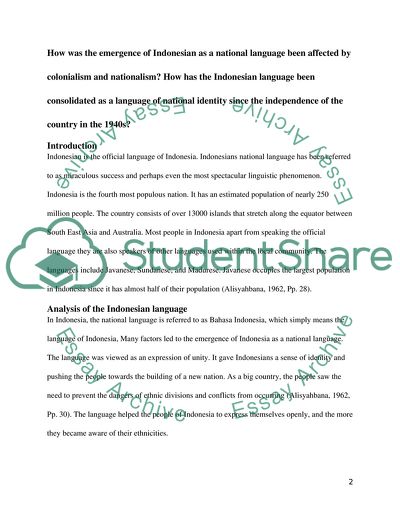Cite this document
(Indonesian as a National Language Essay Example | Topics and Well Written Essays - 2000 words, n.d.)
Indonesian as a National Language Essay Example | Topics and Well Written Essays - 2000 words. https://studentshare.org/humanitarian/1879099-language-and-power-in-asian-societies
Indonesian as a National Language Essay Example | Topics and Well Written Essays - 2000 words. https://studentshare.org/humanitarian/1879099-language-and-power-in-asian-societies
(Indonesian As a National Language Essay Example | Topics and Well Written Essays - 2000 Words)
Indonesian As a National Language Essay Example | Topics and Well Written Essays - 2000 Words. https://studentshare.org/humanitarian/1879099-language-and-power-in-asian-societies.
Indonesian As a National Language Essay Example | Topics and Well Written Essays - 2000 Words. https://studentshare.org/humanitarian/1879099-language-and-power-in-asian-societies.
“Indonesian As a National Language Essay Example | Topics and Well Written Essays - 2000 Words”. https://studentshare.org/humanitarian/1879099-language-and-power-in-asian-societies.


